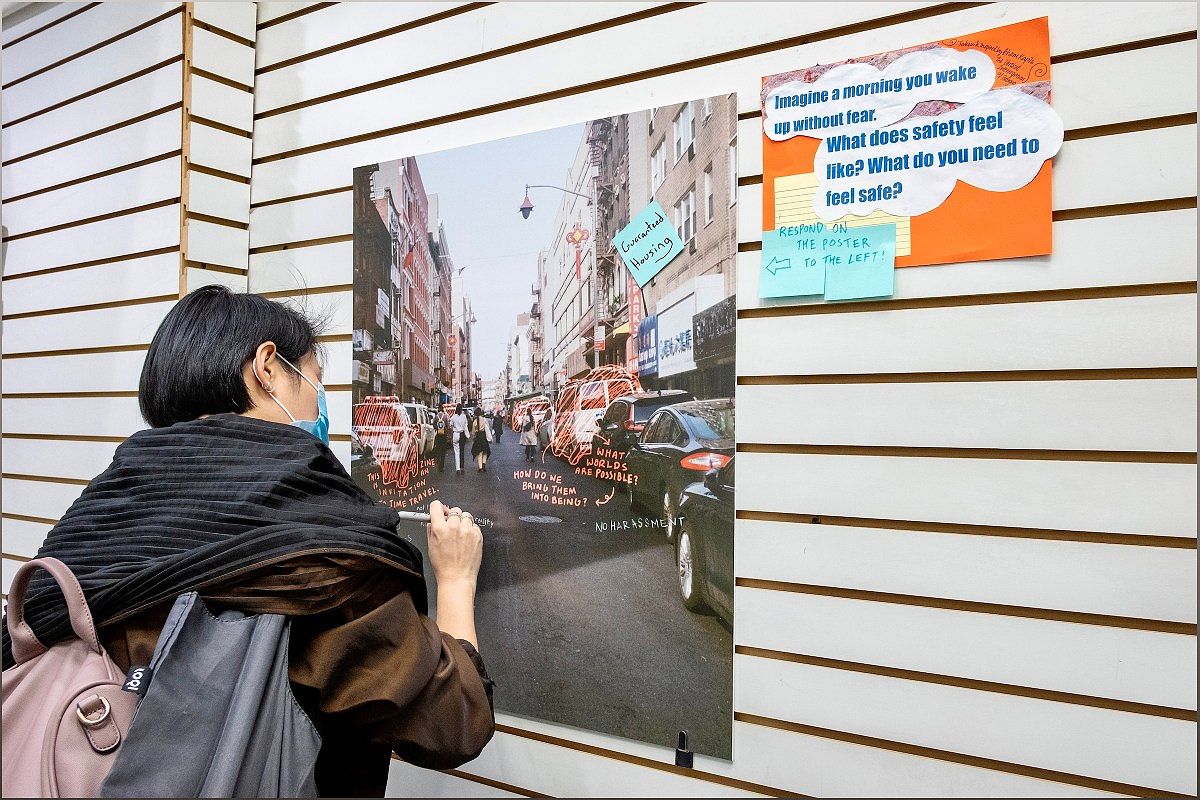On Chinatown's White Street, the sound of construction echoes as the Manhattan Detention Complex is torn down to make way for one of the world's tallest jails. However, the community is not staying silent. The Wing on Wo Project, in collaboration with Immigrant Social Services and Chinatown Art Brigade, is leading the charge in using art and culture to challenge the carceral expansion. Join us as we delve into the connection between activism and self-determination in Chinatown, and explore how art can be a powerful tool for political consciousness.
The Impact of Carceral Expansion on Chinatown
Explore the consequences of the Borough-Based Jails plan and the demolition of the Manhattan Detention Complex.
As the construction noises fill the air on White Street in Chinatown, it is evident that the community is undergoing significant changes. The demolition of the Manhattan Detention Complex is just the beginning of the Borough-Based Jails plan, which aims to rebuild it as one of the tallest jails in the world. This expansion has sparked opposition from various groups, concerned about the impact it will have on the neighborhood.
With limited opportunities for resistance, organizations like the Wing on Wo Project have taken a stand. They believe that the jail is not inevitable and are using art and culture as tools for political consciousness. By exploring the connection between carceral expansion and the fight for self-determination, they aim to raise awareness and challenge the plans.
The Role of Art and Activism in Resistance
Discover how the Wing on Wo Project and its partners are using art and activism to mobilize against the jail construction.
The Wing on Wo Project, in collaboration with Immigrant Social Services and Chinatown Art Brigade, has launched the "Cartographies of the Present: Charting Our Freedom Dreams" programming series. This series aims to highlight the connection between carceral expansion and the fight for self-determination in Chinatown. Through free public events and artistic expressions, they are creating a platform for resistance and critical engagement.
One of the organizers, Serena Yang, emphasizes that the demolition does not signify the inevitability of the jail. Drawing parallels with the militarized police training center in Atlanta, she sees the potential for abolitionist mobilizing. Yang's zine, "The Jail, the Police, and the People's Chinatown," addresses the jail proposal and the surrounding issues, amplifying the voices of the community.
Tomie Arai, co-founder of Chinatown Art Brigade, highlights the responsibility of art and culture workers in the fight against the jail. She criticizes the use of artwashing to legitimize harmful actions and points to the protests against the Museum of Chinese in America (MOCA) for accepting funding linked to the new jail. Arai believes that arts and cultural organizations play a crucial role in maintaining the social fabric of resistance in the neighborhood.
Unveiling the Deceptive Nature of Penal Reform
Delve into the collective study session on the Women's House of Detention and its implications for penal reform.
A collective study session on the Women's House of Detention, an active prison from 1932 to 1971, was held at Wing on Wo. This session aimed to shed light on the deceptive nature of penal reform and the need for critical engagement with the issues surrounding the jail construction.
Organizers Serena Yang and Denise Zhou draw parallels between the rhetoric surrounding the Borough-Based Jails plan and the construction of the Brooklyn jail. They highlight the use of a "warm palette" to evoke neighboring brownstones, emphasizing the importance of arts and cultural organizations in preserving the social fabric of resistance in the neighborhood.
The session emphasized the role of art and culture in challenging the status quo and the need for collective action to dismantle the prison-industrial complex. By examining the history of the Women's House of Detention, participants gained a deeper understanding of the complexities of the carceral system and the importance of continued resistance.
Art as a Tool for Political Consciousness
Explore how the Wing on Wo Project's programming series challenges carceral expansion through art and culture.
The programming series, "Cartographies of the Present: Charting Our Freedom Dreams," organized by the Wing on Wo Project, Immigrant Social Services, and Chinatown Art Brigade, aims to challenge the carceral expansion in Chinatown through art and culture. By providing a platform for resistance and critical engagement, they seek to raise awareness and mobilize the community.
The series includes free public events, with the final event scheduled for December 2 at 26 Mott Street. These events serve as spaces for dialogue, exploration, and the sharing of experiences. Through art, the organizers aim to ignite political consciousness and inspire action against the jail construction.
By utilizing art as a tool for political consciousness, the Wing on Wo Project and its partners hope to create a lasting impact in the fight against carceral expansion. They believe that through collective action and the power of creativity, change is possible.

